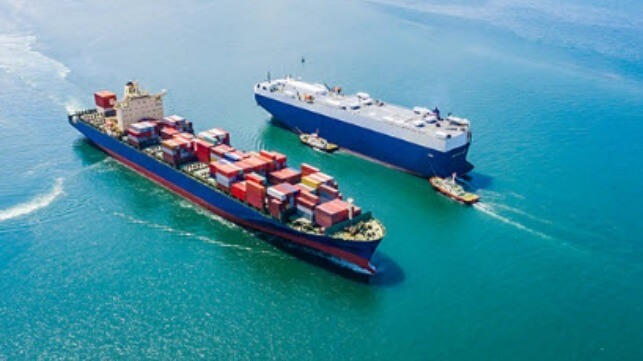USTR Proposes Further Changes to Port Fees for Car Carriers and Equipment

Four days before the USTR Section 301 fee program is due to launch for Chinese-owned, operated, or built ships, they are proposing further changes while also seeking to provide answers to some of the definition questions. The latest proposed modifications are in response to comments on the program, with the largest impact likely on the car carrier segment of the market, as well as port equipment.
The latest proposed modifications launch a new comment period for the program that will run through November 12. While the proposals are being reviewed, liquified gas carriers, LPG carriers, and the Ro-Ro segments would be permitted to defer fees through December 10. Other segments will proceed next Tuesday, October 14.
One of the areas that received comments was on how the fees should be set for car carriers. There has been a debate between a fee per unit carried versus net tonnage, and the USTR has decided to proceed with net tonnage. It, however, is proposing to raise the fee from $14 per net ton to $46 per net ton based on comments that the fee was too low to be effective in “obtaining the elimination of China’s acts, policies, and practices.”
The argument was that the Car Equivalent Unit measurement can be manipulated. Net tonnage is a set figure used by the U.S. Government. The fee applies to all foreign-built vehicle carriers, not just those from China. This has opened it up to further criticism that it is beyond the scope of the mandate, and that could become a future point to challenge the fees.
They are proposing an exemption for vessels in the Maritime Security Program to maintain the incentives for maximum use of the U.S. flag and to ensure the availability of such vessels. However, they are now proposing that the provision would expire on April 18, 2029, unless extended.
The provision that the USTR could suspend the licensing for LNG shipments if certain restrictions were not met would be removed from the program. The USTR acknowledges the need for U.S.-flagged vessels and the current lack, while saying it will continue to monitor progress in this area.
Cargo handling equipment, including cranes, however, would see further increases in their tariffs. An additional tariff of up to 150 percent on equipment such as rubber tire gantry cranes would be added. This continues the push to force the reshoring of the manufacturing of this equipment despite ports’ complaints that there currently are no options, and it would limit the ability to expand operations.
In addition to providing some additional definitions on segments of containerships and bulkers, the proposed changes add exemptions for certain ethane and liquified petroleum gas carriers, but they remove exemptions for Chinese-built “Lakers.” A provision for exemptions of vessels up to 10,000 dwt would also expire on April 18, 2029, unless renewed.
The proposed changes come as China also announced today, October 10, that it would introduce a reciprocal program next week for U.S.-owned or flagged vessels.
Lawyers will be continuing to review the latest proposed changes for additional details within the 32 memoranda. It is certain to spark further comments and complaints while extending some of the deadlines till mid-December.
